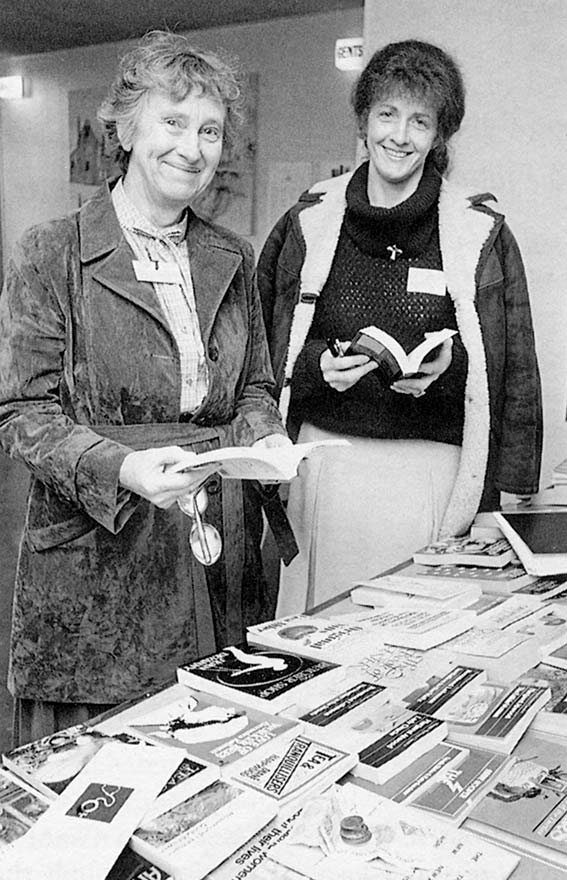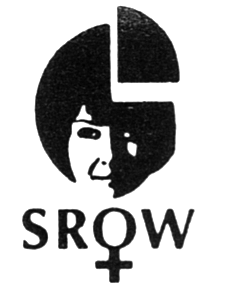This essay written by Rae Julian was first published in Women Together: a History of Women's Organisations in New Zealand in 1993. It was updated by Rae Julian in 2018.
1966 – 1993
The principal aim of the Society for Research on Women in New Zealand (SROW) was to research topics concerning women. From 1966 it carried out, mainly through intensive voluntary work, over 50 pieces of research, most of which were published. SROW reached a peak in 1973 when branches flourished in Auckland, Wellington, Christchurch, Dunedin and Waikato. After that its activities declined, despite the later formation of branches in Palmerston North and Hawke's Bay. Women at home with young children were the mainstay of SROW research projects during its early years; later they became more likely to be in paid work. In 1992 only Wellington and Christchurch had active branches.
Early in 1966, Leonore Crosby organised a lecture series, 'The Changing Role of Women', at Linden Playcentre in Wellington. Over 300 women attended and there were numerous requests for a follow-up. But this required factual information about the situation of women in New Zealand which simply did not exist.
Margaret Shields and Mary Mowbray took up the challenge, deciding that women could do the necessary research themselves. The result was the formation of SROW later that year. The first project, started in 1967, was a survey of women aged 16-60 living in the four main cities. Urban Women was eventually published in 1972, and covered employment patterns, retraining needs, education, community involvement and leisure interests. By then, branches of SROW had been established in the four main cities to carry out the local research and other activities, such as making a submission to the Royal Commission on Social Security in 1970.
The second national survey, Employers' Attitudes: Work Opportunity for Women (1973), was jointly undertaken by SROW, the National Advisory Council on the Employment of Women, and the Department of Labour. It explored the preferred employment patterns of employers and how flexible they were prepared to be in times of labour shortage. Most SROW projects were carried out by individual branches, and covered topics such as maternity services, solo mothers, childcare, housing and the care of dependants.
By 1972, when groups such as National Organisation for Women (NOW), Women's National Abortion Action Campaign (WONAAC) and women's liberation were attracting those who wanted more immediate change in the status of women, SROW had established its niche. Its members were mainly middle class Pākehā women, usually with some post-school education. Most were women at home, wanting to extend their lives beyond the routines of household and motherhood. Men were also members, and until the early 1980s held office as treasurers or publication officers, reflecting women's lack of confidence in areas requiring financial or marketing skills. Men were also brought in as 'experts' (at a seminar series on social research in 1969, five of the six presenters were men). Their professional advice helped to establish SROW's high standard of research methodology.
SROW's relationship with the women's movement was sometimes a source of tension. The generally accepted wisdom was that SROW leaders should not become too 'political' — any statements or submissions they made should arise from SROW research. Many members were wary of being described as feminist, fearing it would undermine the organisation's credibility. However, other members recognised that lengthy reports were unlikely to effect change without further action. Submissions to parliamentary select committees and commissions of inquiry, and lobbying MPs, became important SROW activities.

New Zealand Herald.
Marie Hay, publications officer, and Brenda Jewell, publicity officer, with some of the literature displayed at a Society for Research on Women seminar, Auckland, 1982.
When research triggered action, the results were sometimes spectacular. One in Five, the 1977 Wellington branch report on female participation in school committees, was published immediately before the triennial school committee elections. Some women from Wairarapa branch of the Women's Electoral Lobby (WEL) and Marlborough NOW who had done local interviewing for the project were provoked into standing for election themselves and encouraging other women to join them. The proportion of women members, especially chairpersons of school committees, rose markedly in those areas.
One of SROW's greatest contributions to women's equality was in giving confidence and valuable skills to women, and inspiring them to undertake further study. Its consultative group process reflected theories of feminist research being developed overseas.
Margaret Shields went on to become Minister of Women's Affairs, then director of INSTRAW (the United Nations International Research and Training Institute for the Advancement of Women). Ann Hercus, New Zealand's first Minister of Women's Affairs and later ambassador to the United Nations, was a founder and president of Christchurch SROW. Members and former members included high-ranking bureaucrats, university lecturers, Human Rights Commissioners, and women prominent in other parts of the women's movement, such as Margot Roth and Rosemary Seymour. As Shields said, 'Perhaps it is characteristic of women to underestimate their own abilities. We have often been in the position of persuading people away from envelope addressing to a more responsible technical job. This has almost invariably paid off.' [1]
SROW succeeded in its early aim. It provided factual information about the situation of women in New Zealand at a time when no other such research was being done. Its research was widely disseminated and used by women and organisations whose work concerned women, thus helping to bring about social change.
Rae Julian
1994 – 2006
By the early 1990s, the world of research about women had completely changed. Most of the young educated mothers were returning to paid work, using the quality childcare that had been sought by their predecessors. Most of the universities were teaching women’s studies [3] and the Women’s Studies Association provided a platform for women’s research.
As Margaret Shields wrote in 1993, ‘There are now many other outlets for those who wish to change the situation of women by more direct means: rape crisis, refuge centres, women’s health groups, child care centres ...' [2]
SROW’s national structure closed down in 1991, with branches remaining only in Wellington and Christchurch. Christchurch’s last publication was on the effects of unemployment on women in 1994, but the branch continued afterwards mainly as a discussion group. Wellington remained active, with a final publication on women’s attitudes to retirement in 1999.
In 2006, SROW officially wound up. The remaining funds were contributed to two awards administered by New Horizons for Women, of which SROW had been a foundation member: the SROW/NHWT research award and the SROW Elsie Locke award.
Although SROW’s time had come to an end, its legacy survived in its publications and in new research on women. [4]
Rae Julian
Notes
[1] Margaret Shields, Address, 1971, SROW records, ATL
[2] Margaret Shields, ‘Foreword’, in Gawith, E. J. et al., 1993.
[3] In 2018, the University of Auckland, the University of Waikato and the University of Otago were offering full gender studies programmes.
[4] The National Library holds a full list of SROW publications, accessible at https://sites.google.com/site/womensresearch50/home/publications
Unpublished sources
Society for Research on Women records, 1966–1992, ATL
Society for Research on Women Auckland Branch, History of SROW (typescript), 5 pages, Auckland Museum
Published sources
Gawith, E. J. et al., Women Centre Stage: A Study of SROW and its Research, SROW Wellington, 1993
Mowbray, Mary and Whitcombe, Judy, The legacy of the Society for Research on Women, Women’s Studies Journal, Vol. 31 No. 1, July 2017, pp. 100–147.
Society for Research on Women Newsletter, June 1968–March 1972
Society for Research on Women Journal, 1972–1973
Society for Research on Women, Urban Women (revised edition), SROW, Wellington, 1981
Society for Research on Women, What Has Happened? A Review of 25 Years of Research by the Society for Research on Women in New Zealand (Inc), SROW, Wellington, 1991


Community contributions